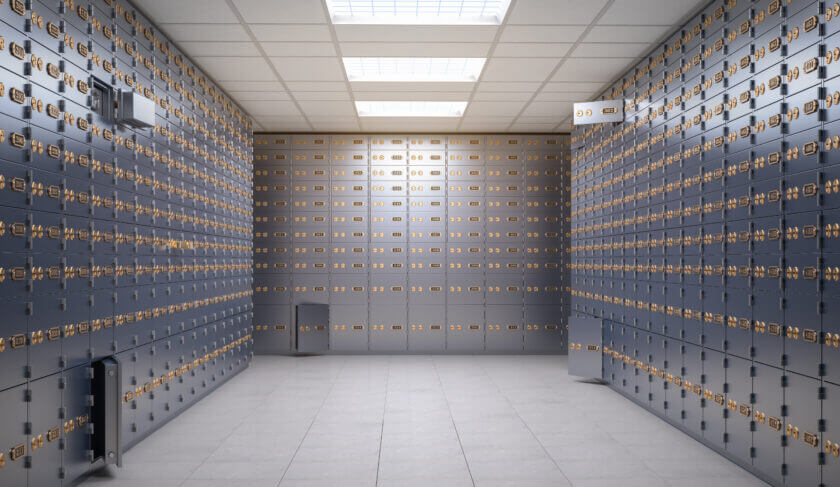
Last week, we watched as the collapses of Silicon Valley Bank and Signature Bank sent ripples through the market, and in the days since, Credit Suisse’s bondholders lost $17 billion as the bank faltered. Over the weekend, it was announced that UBS will buy Credit Suisse in a $3.2 billion deal.
At HerMoney, we explored how Silicon Valley bank was forced to sell treasuries at a loss in order to pay an ever-increasing number of depositors who made a run for their money. We also looked at how the FDIC and Treasury changed the game when they announced that they’d backstop deposits at both banks, regardless of size. We also put out a special episode of the HerMoney Podcast with Peter Polson, founder and CEO of Tiller Money who banked with Silicon Valley Bank, and watched, overnight, as Tiller Money “went from a financially healthy, strong position to a balance of zero available funds.”
SUBSCRIBE: Own your money, own your life. Subscribe to HerMoney to get the latest money news and tips!
It’s a lot. And we know you’re wondering what impact the recent bank collapses have on your savings and investments. Let’s dive into some of your FAQ
What impact, if any, will the recent bank collapses have on investors?
Investors in the banks (stockholders and bondholders) that have gone under are unlikely to get bailed out by the Federal Government, so the bank collapse will be bad for them. The markets took an immediate tumble on news of the bank failures, but that seems to have shaken out already. Credit Suisse’s need for more funds was unsettling as was the news that First Republic was in trouble (11 banks joined forces and infused $30 billion to help them out) and investors could get spooked if more banks falter.
Are investors more likely to start selling their shares in mid-size banks?
In fact, it’s already been happening U.S. mega-banks such as JPM Chase (JPM) and Citigroup saw an influx of new clients after the collapses. Many depositors in smaller banks could transfer their money into one of the 8 banks in the US identified as SIBs (Systemically Important Banks). These are banks that are considered “too big to fail.” They’re subject to greater scrutiny and regulation to ensure their structure is sound. (JPM is the biggest of these and considered the safest banking institution in the US.)
Are certain tech companies more in danger of defaulting on bills?
Since the government has agreed to insure all deposits, no matter how large, money deposited in the failed banks should be safe, although some companies may not be able to access all their funds immediately. (In other words, some companies that didn’t have enough cash on hand may experience lag time in payments and processing until the government makes their funds available.)
How can someone determine the safety of their own bank?
As Karen Finerman wrote, “as long as you have less than $250,000 (as an individual) or $500,000 (jointly) in cash or CDs at a single institution,” your money is insured by the Federal Deposit Insurance Corporation (FDIC). (You can thank President Franklin D. Roosevelt for that.) As long as your bank is FDIC insured, you shouldn’t be worried. But if you have cash in one bank over the FDIC limits, it’s time to consider spreading it around. (And this could prove to be a very good move, since you don’t need to look far to earn more than 4% on your money.)
Are online banks that pay higher rates more in danger of collapse now?
As long as your online bank is legit and FDIC insured, all the same insurance rules apply. (Note: Credit Unions are insured by the NCUA, the National Credit Union Administration, but the limits are the same, so you’re safe there as well.) As to gauging your online bank’s stability, Finerman says it all depends on “what they’re doing with their deposits. Are they stuck in the same situation that Silicon Valley Bank was where they have the wrong kind of securities backing up their deposits?”
Do the recent bank collapses demonstrate a need to return to the safeguards of Dodd-Frank, or make a new determination on what constitutes a small bank?
“The safeguards question is a good one,” Finerman says. “How did this happen that this bank was so mismatched with its deposits and the price of the assets that it owned? The 2018 change probably wasn’t a good one.” While the Dodd-Frank safeguards didn’t protect for every possible failure, had Silicon Valley Bank still come under the bill’s oversight, a stress test probably would have caught its financial problems sooner.
When the Fed raises rates to combat inflation, how much does it weigh another impact – such as a bank’s inability to borrow money cheaply enough to safeguard all its deposits? Or are these failing banks just collateral damage, kind of like lost jobs?
“The Fed probably didn’t see this particular thing happening,” Finerman says. “But I do not in any way blame the Fed, because the Fed said over and over for the last 15 months that it was going to raise rates, because we need to address inflation. Silicon Valley Bank should have heard them and realized, ‘Whoa, we’re in the wrong securities. The short end of the [yield] curve will pay more. We need to be on the short end of the curve.’ They had every chance to do that, but they didn’t. One of the big things of Jerome Powell’s tenure is communication. So this shouldn’t have been the collateral damage, but banks being less profitable could have been acceptable collateral damage.”
MORE ON HERMONEY:
- Lessons Learned from the Silicon Valley Bank Collapse
- “Is My Money Safe?” Real Answers For What’s Happening At U.S. Banks
- What Happened at Silicon Valley Bank, In Plain English
SUBSCRIBE: Own your money, own your life. Subscribe to HerMoney to get the latest money news and tips!







